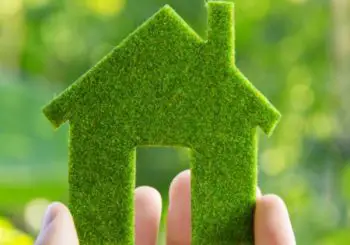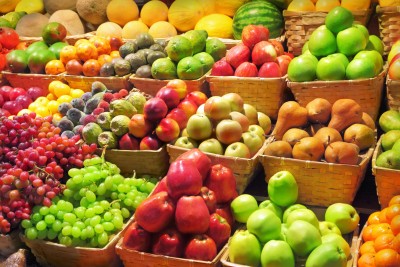By Jane Marsh
Guest Writer for Wake Up World
Are you thinking about tackling a few renovations this fall? There are plenty of ways you can upgrade your home for greater sustainability and added value.
Fortunately, many home upgrades don’t have to break the bank or take up too much of your time. Green home improvements can range from more extensive remodeling to DIY-friendly projects you can complete over the weekend.
[pro_ad_display_adzone id=”110028″]
If you’re wondering how to improve your home’s energy efficiency and reduce expenses during the cooler months, these 10 sustainable home renovations may be the ticket this fall.
1. Upgrade Your Appliances
Utility bill savings, greater energy efficiency, and improved indoor air quality go hand in hand when you upgrade your home’s appliances.
According to the Appliance Standards Awareness Project, American households have pocketed about $500 annually on utility bills since the National Appliance Energy Conservation Act of 1987.
This fall, consider purchasing newer models of your most frequently utilized appliances. For example, families may run 300 loads of laundry per year, yet they’ll use 25% less energy and 33% less water with Energy Star-certified washing machines. Over their lifetime, these washers and dryers can save you almost $370.
Likewise, older toilets use 6 gallons of water per flush, whereas newer models only require 1.28 gallons per flush – 20% less than federal standards.
2. Install a Smart Thermostat
Installing an HVAC unit with a smart thermostat is another home improvement project you should consider before the temperature dips. Smart thermostats come equipped with advanced technology features to improve indoor comfort, such as:
- Remote control from a mobile device.
- Ability to program heating and cooling based on occupancy to avoid wasting energy.
- Motion sensors that detect when the family is at home.
- Learning systems that allow your smart thermostat to configure your preferred settings.
- Reporting of household energy consumption and tips to improve energy efficiency.
Savings vary according to the type of smart thermostat you install. Consumers with Energy Star-certified systems save about $50 per year on utilities and use 8% less energy. Meanwhile, Google Nest can save 10-15% on heating and cooling with household savings of up to $145 on energy costs.
3. Plant New Trees
Enhancing your curb appeal might be ideal as you consider renovations and home improvements to make this upcoming season.
The Arbor Day Foundation says fall is the ideal time to plant a tree. This is because the cooler, wetter conditions make it much easier for trees to establish roots than in the summertime.
According to the U.S. Department of Agriculture (USDA) Forest Service, properly placed trees can lower your need for air conditioning by 30% and save you between 20% and 50% on heating costs.
4. Remodel the Fireplace
An old wood-burning fireplace has all the charm, but it could harm your indoor air quality and health.
Smoke from burning wood emits toxic air pollutants such as formaldehyde, benzene, and polycyclic aromatic hydrocarbons (PAHs), that can irritate your eyesight and respiratory system. The fine particles may even cause heart attacks, strokes, and asthma attacks.
At the start of the season, homeowners may forget to open the flue before lighting a fire, which could release dangerous fumes and smoke into your home.
Remodel your fireplace this fall with a cleaner, greener fireplace that meets current EPA standards, or use solar, natural gas, or heat pumps. Otherwise, pellets and dry wood burn cleaner.
5. Repaint With Low- or No-VOC Paint
Give your home a makeover with a coat of paint – but opt for products without volatile organic compounds (VOCs) that come with a Green Seal-11 certification on the label.
VOCs contain harmful chemicals that irritate your eyes and lungs and may cause headaches, nausea, or vomiting. Alternative paint products might include milk-based paints and plant- or mineral-based pigments.
Paint isn’t the only thing that contains VOCs – varnishes, flooring, and other construction materials also harbor toxic pollutants. Studies indicate that VOC levels are two to five times greater inside your home than outside.
6. Swap Out Light Bulbs
An easy home improvement project to tackle this fall might be swapping traditional light bulbs for light-emitting diodes (LEDs). Although it may not seem like a big undertaking, this small change can save money and energy consumption.
Remember that lighting amounts to 15% of an average household’s electricity use. Switching to energy-efficient light bulbs like LEDs can save you upwards of 90% on energy consumption and $225 on yearly utility bills. They also last 25 times longer than outdated light bulbs.
While you’re at it, install timers and dimmers for even higher energy efficiency and more complete lighting control.
7. Install New Windows
Cracks and worn sealants could cause your home to lose 25-30% of its heating and cooling. Ensure your home is airtight this fall by replacing windows with energy-efficient alternatives.
Although they tend to be more expensive – between $120 and $1,200 per window – they can save you nearly 7-15% on energy costs annually. The costs for energy-efficient windows are usually determined by the quality of the product, its efficiency level, and how structurally protective the windows are.
If energy-efficient windows are too expensive, weatherize your existing ones with fresh sealant to prevent air leaks.
8. Redo Your Flooring
New wood floors are an attractive upgrade in any house, but you should consider choosing sustainable flooring products, especially since only 18% of the world’s forests are protected.
High-quality bamboo wood is an excellent option for flooring, especially since its trees only take five to six years to harvest as opposed to traditional hardwood flooring trees that take between 50 and 100 years to grow.
Sustainably harvested hardwood flooring is another alternative certified by the Forest Stewardship Council (FSC). FSC-certified products must undergo rigorous compliance measures to earn certification, ensuring your floors are sustainable from harvest to installation.
9. Add a Greener Roof
Autumn is the perfect season for a new roof. Cooler temperatures allow the shingles to settle and seal more efficiently and make it more comfortable for roofers to get the job done well.
Green roofing materials are more energy-efficient than traditional shingles. Consider metal, clay, solar, wood, or rubber roof tiles for your upgrade.
Rubber tiles, in particular, last up to 50 years and can endure harsh winter weather. For those in hotter climates, a cool roof reflects more sunlight and stays 50°F cooler.
10. Construct a Sustainable Patio
This fall, consider sprucing up your outdoor area for greater sustainability. Larger renovations may include installing an FSC-certified wooden deck or redoing your concrete patio with something more porous.
Because concrete is impervious to rainfall, the surrounding grassy area may be susceptible to runoff and erosion.
An eco-friendly fire pit may be another neat idea for cooler evenings. Natural gas or propane fire pits release fewer harmful pollutants into the air and are much cleaner than wood-burning fire pits.
Add Value and Sustainability to Your Home This Fall
Sustainable upgrades always add value to your home. However, greater energy efficiency, higher savings, and improved air quality should certainly be enough to convince you to take on a few home improvement projects this fall.
About the author:
 Jane is the founder and editor-in-chief of Environment.co where she shares practical tips on how to live a greener life.
Jane is the founder and editor-in-chief of Environment.co where she shares practical tips on how to live a greener life.
[pro_ad_display_adzone id=”110027″]







